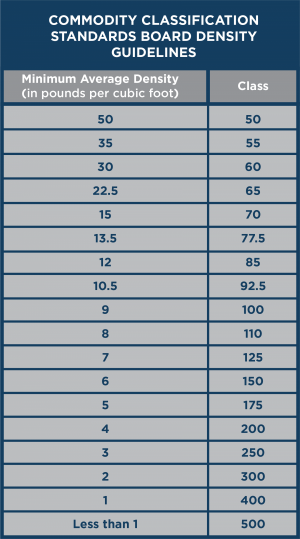We all know shipments come in various shapes, sizes and of course weights. To establish fair measures and standardize pricing, the National Motor Freight Traffic Association (NMFTA) created a freight classification system used for all types of commodities. In this classification system, NMFTA assigns each commodity or type of product an NMFC code for freight shipments. Shipping commodities are grouped into 18 classes based on the four characteristics of density, stow-ability, handling and liability. All carriers use the NMFC classifications as a standard when setting shipping rates, allowing the shipper to receive accurate quotes while establishing fair measures and properly assigning freight class. While we still have the NMFC classes, the shipping industry as a whole is becoming more dependent on density and the rules regarding density are getting more and more complex. As this industry trend continues, AFS will continue to update shippers on best-in-class density based pricing.
Here are a few tips to properly plan your shipment:
- Learn what determines the freight class of your item, including density, stow-ability, handling and liability.
- Determine the basic description of the freight being transported.
- Know what kind of container you item will be shipped in. Also note if you need a lift gate to load the item onto a truck.
- Determine if your package contains hazardous materials that need to be shipped in a specialized manner.
- Measure the length, width and height of the item to be shipped.
- Weigh the item to be shipped in its packaging.
- Determine the density of the shipment. To do so measure your shipment in inches and multiple length x width x height and divide by 1728 – to get volume in cubic inches. Then divide the total weight of the shipment by the volume.
- Fill in the BOL with appropriate values (i.e. NMFC code, sub groups and class).
Contact AFS Logistics at 877-242-3383 to book your load!

